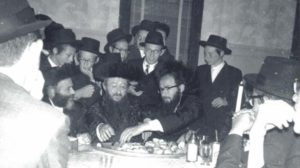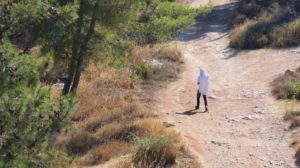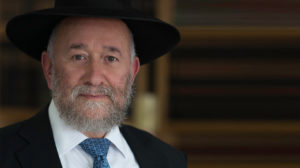Higher & Higher
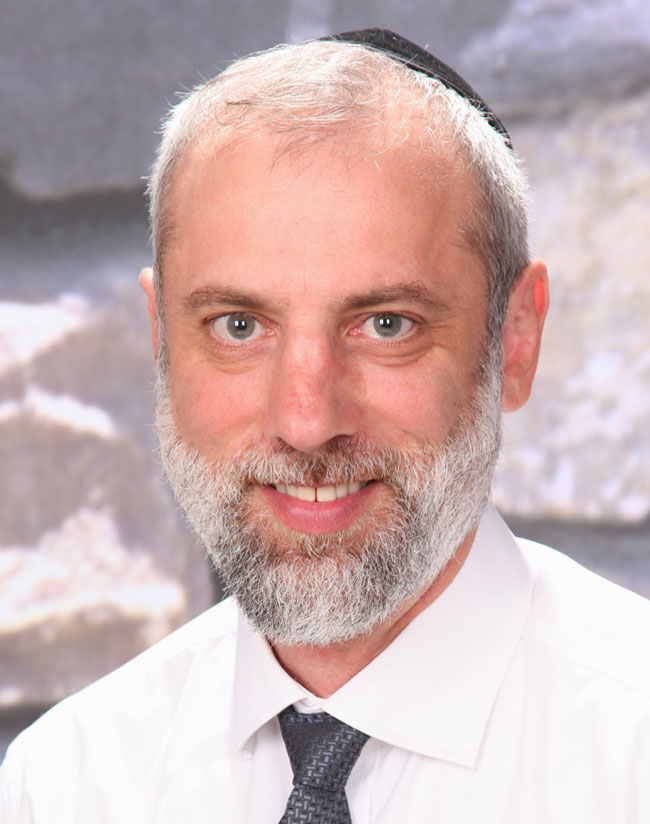
Twenty years ago, Rabbi Doniel Katz didn’t have a single Jewish friend. Today, he leads Elevation, teaching even FFBs how to connect to Hashem.
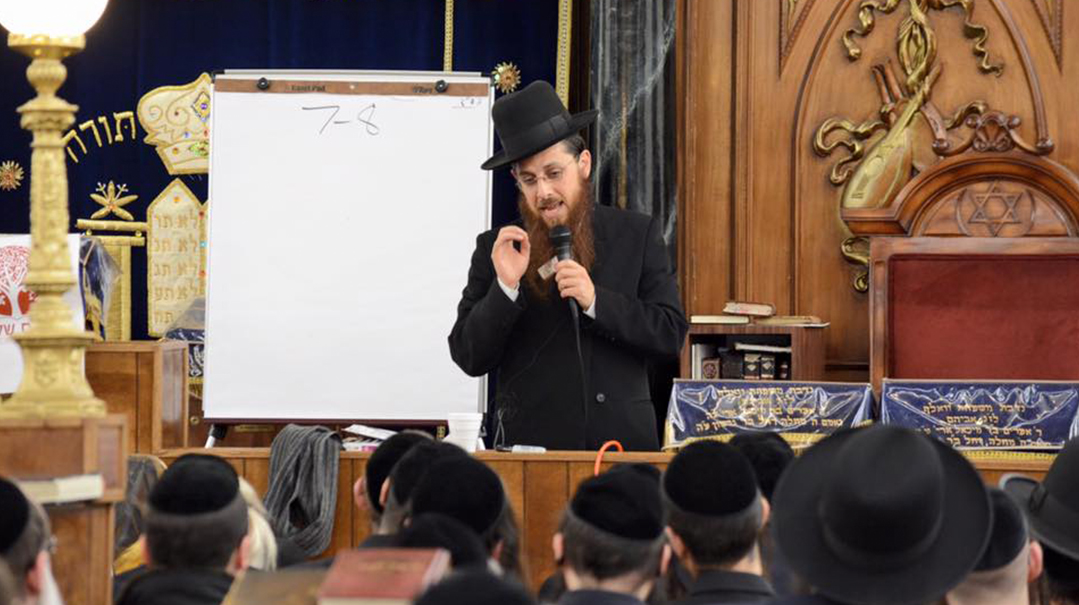
(Photos: Courtesy of Elevation Seminar)
A t a recent Elevation seminar in Jerusalem Rabbi Doniel Katz takes the stage to share the Baal Shem Tov’s technique of ha’alos hamachshavos for getting in touch with one’s inner world.
“We first identify a negative middah then subdue it then turn that energy in a positive direction ” he explains. “This is how Chazal define the difference between a rasha and tzaddik: The rasha’s heart speaks to him while the tzaddik speaks to his heart.”
At the seminar Reb Doniel emphasizes how constant dveikus is predicated on controlling one’s own mind. “Society thinks that happiness is found in the outside world. In truth only when our emotional state is internally generated — independent of external influences — have we achieved emotional liberation.”
Reb Doniel then selects an audience member for a real-time practical application of the technique. “Talk to your heart ” he encourages as the participant silently focuses on an inner struggle. During five minutes of guided meditation the participant reports that decades of anxiety have dissolved on the spot.
“No it’s not magic and lasting change doesn’t come instantly ” Reb Doniel tells the group. “Once we have awareness of our inner thoughts we can build a tool kit to control our minds.
“That ” he says “is the beginning of tikkun hamiddos and true dveikus.”
Point of Connection
Ironically in today’s hyper-connected world the greatest challenge facing Jews is spiritual disconnect. We step up to pray and struggle to stay focused. We face life’s challenges and fail to see Hashem’s constant intervention. We yearn for dveikus but find it elusive. The high percentage of non-observant Jewry and “frum at risk ” are painful symptoms of this problem.
“Without question the greatest challenge facing Jewry today is the lack of an emotional connection with the Borei Olam ” Rav Yitzchak Berkovitz shlita of the Jerusalem Kollel told Mishpacha. “This phenomenon spans all segments of our people from the unaffiliated to the highly observant Lithuanian bnei Torah and even chassidim. We must bring the neshamah back to Yiddishkeit. Every Yid has to know Hashem loves him. Every Yid has to feel close to Him. Every Yid must learn to speak to Him.”
Reb Doniel Katz a 42-year-old Australian baal teshuvah now living in Jerusalem is embracing the challenge. Through practical and experiential workshops his multilevel “Elevation” curriculum mixes tools from mussar and chassidus for increased self-awareness inner serenity and joy. His 300-page sourcebook covers the gamut from Rav Wolbe to Tanya Chovos Halevavos to Maharal Rambam to Rav Dessler.
This message has clearly struck a nerve. Over the past year Elevation’s “spiritual connection” seminars have been presented to packed shuls and kiruv events in Brooklyn London Tel Aviv and Los Angeles; to a crowd of 5 000 at Johannesburg’s Sinai Indaba; and to thousands more in online chaburahs business summits and mindfulness conferences.
Those who grew up Orthodox note the irony of a baal teshuvah teaching them about connection with Hashem.
Speaking with Mishpacha from his home/study center in Jerusalem Reb Doniel explains that while the Elevation seminar is officially a kiruv program its message resonates with frum audiences.
“For centuries rabbanim have been speaking about mitzvas anashim melumadah — the rote performance of mitzvos. But until now it’s never had such fatal consequences. Previously even a Jew doing mitzvos by rote still had emunah peshutah along with a communal safety net. In our generation this is no longer the case. A Jew might appear frum externally yet is missing the true experience of Hashem. With today’s outside stimuli so strong that house of cards can quickly collapse.”
Reb Doniel often quotes the Piaseczno Rebbe, Rav Kalonymus Kalman Shapira, author of Aish Kodesh. The Piaseczno Rebbe defines the foundation of Torah as a tangible relationship with Hashem: talking to Him every day, from the depths of your heart, in your own language and words.
“Torah study is seichel, but davening is intended as a different experience,” Reb Doniel explains. “It’s a more direct connection with Hashem, a profound internal awareness of being guided. If you’re davening properly, something extraordinary happens. The words on the page are a launchpad to an experience. Proper prayer is not a one-way conversation. A brilliant idea hits you — where does that come from? It’s no accident. You feel a cog shift. Hashem is answering you.”
He continues, “In davening, our relationship with Hashem is defined as ‘Elokeinu v’Elokei avoseinu.’ The word ‘Avoseinu’ is knowledge of Hashem through mesorah, the transmission that has held Klal Yisrael together for millennium. But in today’s generation, we need to also promote the power of ‘Elokeinu’ — the direct, personal experience of Hashem.”
Spark Of Teshuvah
Raised a secular Jew in Melbourne, Australia, things weren’t always this way for Reb Doniel. “Until age 23, I had no Jewish friends or Jewish identification,” he says. With a passion for creativity and storytelling, he launched a career as a filmmaker and theater producer, setting sights on Hollywood.
In the meantime, his neshamah was stirring. “I was always idealistic and a deep spiritual seeker — I looked into Buddhism, Hinduism, Sufism, meditation. The one place I never thought to look was Judaism. I perceived it as dogma and details.”
Reb Doniel’s teshuvah journey was sparked, interestingly, by his father, who grew up in prewar Vienna and escaped to Shanghai for ten years. After the war he moved to Israel, and eventually settled in Australia.
In the 1990s, the Austrian government launched an initiative for Holocaust survivors to visit their birthplace. His father was in his 70s and legally blind, and Reb Doniel accompanied him on the trip. “He took me with him to Austria, and from there we visited Israel. We sat down on a bench in Zion Square and he said, ‘Look what we built.’ For the first time, I saw my father cry. He was beholding the miracle of Jewish destiny.”
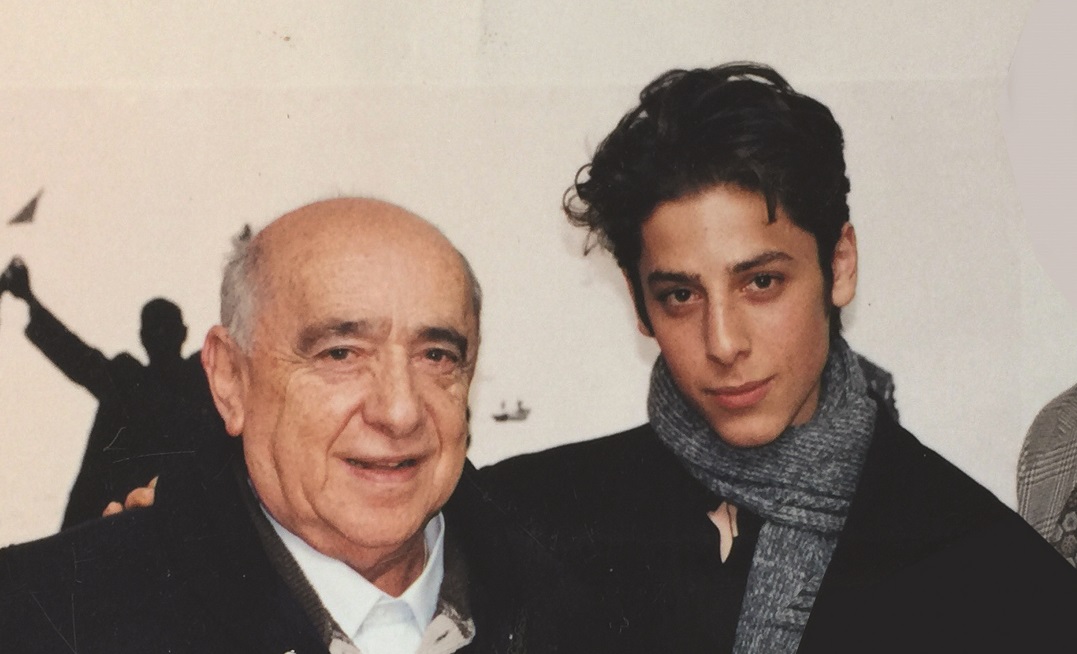
Doniel Katz with his father
Reb Doniel ended up at the Western Wall where a conversation about reincarnation led — predictably — to a few weeks at Aish HaTorah. He went back to Melbourne and “after about a year, Hashem came after me.” He began keeping Shabbos, yet not ready to enroll in yeshivah.
“During this time, all my film and theater projects revolved around the theme of ‘Don’t get caught in the momentum and habits of life. Ask questions and confront the truth.’ People kept asking me, ‘What is the purpose of life?’ And I had nothing to say. That was a deep existential moment. I realized that with no ability to transform myself, I was part of the problem.”
Back in Israel, Reb Doniel tried out different yeshivos. It was a period of intense struggle, frustration, and lack of inspiration.
“I was becoming more frum and more knowledgeable, but I also wanted a relationship with Hashem, to connect on a transcendent level. It bothered me that my personal ‘spiritual toolkit’ was based more on my days investigating Buddhism.”
Reb Doniel says he searched long and hard until he found mussar and chassidic techniques that were “profoundly transformational and 100 percent Torah,” and until he gained the confidence that it was “okay to learn these topics along with Gemara b’iyun.”
“There were many amazing hashkafah shiurim, but no one was speaking in an experiential language,” he explains. “Occasionally, I would stumble across an old chassid or mekubel that I could relate to on that level.” Reb Doniel began spending more time in the kehillah of Rav Tzvi Meir Zilberberg. “They took avodas Hashem very seriously. That became a place where I could explore and experiment.”
With determination and rabbinic guidance, Reb Doniel culled seforim for tools to calm the mind, increase performance, sustain focus, heal emotional wounds,
unleash powers of creativity, and — most importantly — connect with Hashem.
He was shocked to discover that some of the secular world’s “cutting-edge therapies” actually appear in Torah sources from centuries ago. For example, Rabbi Yisrael Salanter’s technique for calming emotions — hashkatah — is popularly known as “mantra meditation.”
Reb Doniel also cites the example of EMDR — Eye Movement Desensitization and Reprocessing — which the World Health Organization and American Psychiatric Association endorse as a leading treatment for trauma and PTSD. Using EMDR, patients focus on a traumatic memory, then engage in rapid back-and-forth eye movements until the memory disappears.
“The Baal Shem Tov’s Tzava’as HaRivash describes this exact technique for overcoming disconnect mode,” he says. “Part of the technique involves looking quickly from side to side, which scatters the mind and knocks you into a state of dveikus.”
Slowly but surely, Reb Doniel began teaching these techniques. His first teaching gig was through Ohr Somayach. “I taught for a month in Australia at a Moriah school camp called Counterpoint, an intensive kiruv camp for high school kids,” Reb Doniel recalls. “It was a very powerful awakening for my calling in life as a teacher. I’ll never forget the first class I taught. I walked out of the room feeling that — with teaching — every single one of my life talents has true expression and make perfect sense.”
The idea of the Elevation seminar came one day when Reb Doniel was learning Hakshares HaAvreichim, a sefer of the Piaseczno Rebbe, and a technique of Rav Reuven Leuchter. “A light went on inside,” he says. “I realized I had some transformative teachings that could have powerful benefit and be taught in a few hours.” He found a cool location in Jerusalem and put up some posters. The event hit an untapped market and sold out. “It was just a simple experiment,” Reb Doniel says. “You can never underestimate the power of just diving in. It really opened the doors to the possibilities of what is possible.”
Today the Elevation seminar reaches thousands on five continents. Elevation has also created an online platform with hundreds of people paying for a series of high-production videos and online interactive workshops — with an infrastructure that is scalable to accommodate thousands more, in what he hopes will become a huge global chaburah.
“The idea of ‘chaburah’ is an organic social environment where like-minded people can discuss, share, explore, and encourage each other to stay focused,” he says. “Everything works better in a chaburah. Like a minyan, it draws on the innate power of Jews coming together for avodas Hashem.”
Kiruv Horizons
Whatever its appeal to frum Jews, secular Jews need these ideas most of all. Modern man faces a near-constant blur of “connectivity”; one San Diego University study found that average Americans are bombarded with over 100,000 words and 12 hours of information and media every single day.
The result of this mobile-obsessed, frantic pace of life is an exponentially-increasing degree of disconnect: from self and from Hashem.
Yet ironically, this produces an equal and opposite yearning to reconnect. Books and seminars in the field of inner spiritual development are enjoying a boom. Secular Jews shell out thousands of dollars for self-development seminars and meditation retreats, in search of a “direct spiritual experience.”
In the secular “mindfulness movement,” devotees across the globe seek constant and higher states of consciousness. Mindfulness is today a multibillion-dollar industry, taught to corporate executives, sports teams, and on Millennial retreats. Books like Mindful Parenting and The Mindful Diet are top sellers. Similarly, a substantial percentage of non-Asian Buddhists are of Jewish heritage.
Into this fold has stepped a number of “Torah mindfulness” teachers who — in facilitating authentic spiritual connection — co-opt some of secular nomenclature like flow state, emotional intelligence, and transcendence.
Rabbi Yom Tov Glaser is a baal teshuvah and longtime Aish HaTorah lecturer with prominent haskamos for his weeklong seminar, The Possible You, where participants learn to identify the roots of their negativity and unlock their “inner light.”
“There is a powerful thirst and desire in this generation,” says Rabbi Glaser, who — when not off teaching his seminar — appears regularly at the Aish Essentials program in Jerusalem. “The global consciousness movement is not an obstacle, but a unique opportunity to show people that Torah has depth and insight unavailable elsewhere. Becoming inspired is just a matter of connecting to the infinite possibilities that are waiting for us to access.”
Over 5,000 people, including prominent rabbanim, are graduates of The Possible You seminar.
Rabbi Dov Ber Cohen, a baal teshuvah who traveled the Far East — meditating on hilltops and training 16 hours a day in the martial arts — later discovered that Torah contains the elements for mastering mindfulness. After years in yeshivah, he now leads spiritual retreats and is educational director of the Justifi kiruv program.
“The basis of mindfulness is discipline. In the Torah system, everything in life — whether saying a brachah or putting on my right shoe first — is a conscious act that plugs me into the moment,” he says. “Our whole experience of life comes from our thoughts. Mindfulness means awareness of what’s going on in your mind. That’s essential to being an observant Jew.”
Secular “mindfulness,” meanwhile, has become distorted by the prevailing narcissism of our time, Dov Ber says. “For secular people, mindfulness is the goal. You’re ‘enlightened!’ By contrast, Torah mindfulness leads to a goal: G-d consciousness. We integrate that into our lives through what I call the ‘ultimate martial art,’ halachah.”
In one module of the Elevation seminar, participants are asked to focus on a particular object — e.g., a cup — for as long as possible, with no distracting thoughts. Most manage for only a few seconds. Reb Doniel then teaches a mussar-based technique for concentration, and by the end of the session participants can stay focused for a few minutes. Participants will often spontaneously cheer and celebrate their success.
Rabbi Aaron Eisemann, director of Meor, a kiruv program at New York University — where spiritual practice is widely popular — applies some of Doniel Katz’s techniques to campus kiruv.
“Many students had a Jewish spiritual experience — at the Western Wall, for instance. But overall, they perceive Judaism as ritual practice and intellectual study,” he says. “When they discover Judaism’s path to connect with G-d — to generate a consistent spiritual feeling — that’s a huge paradigm shift in their relationship with Yiddishkeit.”
Because programs like Elevation have critics in the Torah world, Reb Doniel is careful to ground the sources and practices in Chazal. “When I teach a powerful technique,” Reb Doniel says, “we always read the Torah source inside together. I want people to credit their spiritual success to Torah. The ‘radical innovation’ of the curriculum is, if anything, a poignant reminder of how much our generation has lost contact with these essential teachings. People say: ‘I never knew this was possible. And I never knew this was in Torah.’ ”
Rav Berkovits, who leads a kollel that has produced numerous Torah-world leaders, told Mishpacha of the great importance of promoting this material. “Elevation draws from an abundance of source material on the subject that has disappeared from our curriculum. We must see to it that this material is reintroduced to the masses, and that Yidden are shown just how crucial this is to their Yiddishkeit.”
Final Evolution
Moving forward, Reb Doniel envisions forming local chaburahs, while training educators to share the Elevation curriculum in Jewish schools. He dreams of a day when Torah ambassadors — e.g., kiruv rabbis — “are trained not just in halachah, but also in world-class spiritual mastery, aligned with the sensitivities of the generation and better able to compete.”
Despite the mounting spiritual disconnect, Reb Doniel is optimistic that modern society is unwittingly setting the stage for what he terms “the final evolution” — when science and spirituality collide, and humanity comes full circle to realize the truth of Torah.
“On one hand, our generation is Ikvesa D’Meshicha. Eikev, the heel, is the coarsest and least-sensitive part of the body, the furthest from the head. Ours is a crass, materialistic, desire-based society. Yet in another respect this generation is the highest, since we’re drawing more spiritual energy from the times of Mashiach.”
The time, he says, is ripening for an explosion of G-d-consciousness.
“With the science of mindfulness and consciousness becoming mainstream, this is the start of the messianic promise of ‘Malah ha’aretz deiahf es Hashem — the world is filled with knowledge of Hashem’ (Yeshayahu 11:9). The sole purpose of Torah is to reawaken the dveikus within you, empower it, and maintain it forever. When the circuits are connected, that point of dveikus is a wellspring of blessing. The next level of kiruv can have global impact. The surface is being watered. With the right tools, we can open the floodgates.”
(Originally featured in Mishpacha Issue 679)
Oops! We could not locate your form.

